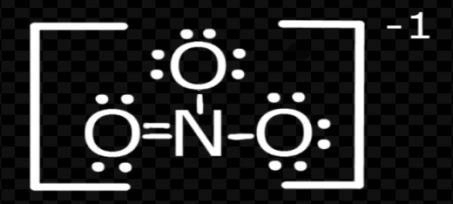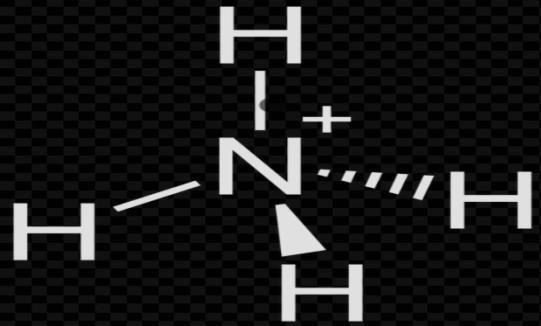
The hybridization of atomic orbitals of N in $NO_{2}^{+}$, $NO_{3}^{-}$ and $NH_{4}^{+}$ are respectively.
(A) \[sp\], \[s{{p}^{2}}\], \[s{{p}^{3}}\]
(B) \[sp\],\[s{{p}^{3}}\], \[s{{p}^{2}}\]
(C) \[s{{p}^{2}}\], \[sp\], \[s{{p}^{3}}\]
(D) \[s{{p}^{2}}\], \[s{{p}^{3}}\], \[sp\]
Answer
486k+ views
Hint: Hybridization of a molecule is determined using the postulates of the Valence band theory and it is basically the phenomenon of mixing of orbitals.
Complete step by step solution:
Hybridization (mixing of orbitals) when two or more than two types of orbitals having less energy difference are combined and form the same number of new orbitals having similar shape and energy but different orientation.
Formula of hybridization; -
$H=\dfrac{(V+M-C+A)}{2}$
Here,
H= hybridization
V = number of valence shell electron of central atom
M= number of monovalent atom surrounding the atom
C= charge on cation
A= charge on anion
-First of all, we have to find out which is the central Atom here so the nitrogen is the central Atom here.
-Therefore, the electronic configuration of nitrogen atom is 1\[{{s}^{2}}\] 2\[{{s}^{2}}\] 2\[{{p}^{3}}\].
-According to the electronic configuration the first (inner) shell will have two electrons and the outermost shell will have two electrons and the outermost shell will have 5 electrons.
-Number of outermost shell electrons is the number of valence shell electrons of Atom.
So, now we are solving for $NO_{2}^{+}$;
By formula of hybridization
$H=\dfrac{(V+M-C+A)}{2}$
where,
V= 5; C= 1
M= 0; A= 0
Put these values in formula
H =$\dfrac{\left( 5\text{ }+\text{ }0\text{ }-1\text{ }+\text{ }0\text{ } \right)}{2}$
H= $\dfrac{4}{2}$= 2
So, the hybridization = \[sp\]

Now solving for $NO_{3}^{-}$;
Again, by formula
V = 5; M= 0
C= 0; A = 1
Put these values in formula
$H=\dfrac{(V+M-C+A)}{2}$
H= \[\dfrac{\left( 5\text{ }+\text{ }0\text{ }-\text{ }0\text{ }+\text{ }1 \right)}{2}\]
H= $\dfrac{6}{2}$ = 3
So, the hybridization = \[s{{p}^{2}}\]

Now solving for $NH_{4}^{+}$;
Again, by formula
$H=\dfrac{(V+M-C+A)}{2}$
V= 5; M = 4
C = 1; A = 0
Put these values in formula
H= $\dfrac{\left( 5\text{ }+\text{ }4\text{ }-\text{ }1\text{ }+\text{ }0 \right)}{2}$
H=$\dfrac{8}{2}$= 4
So, the hybridization is =\[s{{p}^{3}}\]

So, by solving these the hybridization of atomic orbitals of N in $NO_{2}^{+}$, $NO_{3}^{-}$ and$NH_{4}^{+}$ are respectively \[sp\], \[s{{p}^{2}}\], \[s{{p}^{3}}\].
Therefore, the correct option is option (A) \[sp\], \[s{{p}^{2}}\], \[s{{p}^{3}}\].
Note:
-Check properly the number of valence shell electrons of the central Atom.
-Check properly the number of monovalent atoms.
-Check properly the charge of cation and anions
Complete step by step solution:
Hybridization (mixing of orbitals) when two or more than two types of orbitals having less energy difference are combined and form the same number of new orbitals having similar shape and energy but different orientation.
Formula of hybridization; -
$H=\dfrac{(V+M-C+A)}{2}$
Here,
H= hybridization
V = number of valence shell electron of central atom
M= number of monovalent atom surrounding the atom
C= charge on cation
A= charge on anion
-First of all, we have to find out which is the central Atom here so the nitrogen is the central Atom here.
-Therefore, the electronic configuration of nitrogen atom is 1\[{{s}^{2}}\] 2\[{{s}^{2}}\] 2\[{{p}^{3}}\].
-According to the electronic configuration the first (inner) shell will have two electrons and the outermost shell will have two electrons and the outermost shell will have 5 electrons.
-Number of outermost shell electrons is the number of valence shell electrons of Atom.
So, now we are solving for $NO_{2}^{+}$;
By formula of hybridization
$H=\dfrac{(V+M-C+A)}{2}$
where,
V= 5; C= 1
M= 0; A= 0
Put these values in formula
H =$\dfrac{\left( 5\text{ }+\text{ }0\text{ }-1\text{ }+\text{ }0\text{ } \right)}{2}$
H= $\dfrac{4}{2}$= 2
So, the hybridization = \[sp\]

Shape = linear
Now solving for $NO_{3}^{-}$;
Again, by formula
V = 5; M= 0
C= 0; A = 1
Put these values in formula
$H=\dfrac{(V+M-C+A)}{2}$
H= \[\dfrac{\left( 5\text{ }+\text{ }0\text{ }-\text{ }0\text{ }+\text{ }1 \right)}{2}\]
H= $\dfrac{6}{2}$ = 3
So, the hybridization = \[s{{p}^{2}}\]

Shape = trigonal planar
Now solving for $NH_{4}^{+}$;
Again, by formula
$H=\dfrac{(V+M-C+A)}{2}$
V= 5; M = 4
C = 1; A = 0
Put these values in formula
H= $\dfrac{\left( 5\text{ }+\text{ }4\text{ }-\text{ }1\text{ }+\text{ }0 \right)}{2}$
H=$\dfrac{8}{2}$= 4
So, the hybridization is =\[s{{p}^{3}}\]

Shape = tetrahedral
So, by solving these the hybridization of atomic orbitals of N in $NO_{2}^{+}$, $NO_{3}^{-}$ and$NH_{4}^{+}$ are respectively \[sp\], \[s{{p}^{2}}\], \[s{{p}^{3}}\].
Therefore, the correct option is option (A) \[sp\], \[s{{p}^{2}}\], \[s{{p}^{3}}\].
Note:
-Check properly the number of valence shell electrons of the central Atom.
-Check properly the number of monovalent atoms.
-Check properly the charge of cation and anions
Recently Updated Pages
Can anyone list 10 advantages and disadvantages of friction

What are the Components of Financial System?

How do you arrange NH4 + BF3 H2O C2H2 in increasing class 11 chemistry CBSE

Is H mCT and q mCT the same thing If so which is more class 11 chemistry CBSE

What are the possible quantum number for the last outermost class 11 chemistry CBSE

Is C2 paramagnetic or diamagnetic class 11 chemistry CBSE

Trending doubts
Which is not a source of freshwater 1 Glaciers and class 11 chemistry CBSE

10 examples of friction in our daily life

The correct order of melting point of 14th group elements class 11 chemistry CBSE

Difference Between Prokaryotic Cells and Eukaryotic Cells

One Metric ton is equal to kg A 10000 B 1000 C 100 class 11 physics CBSE

What is the specific heat capacity of ice water and class 11 physics CBSE




